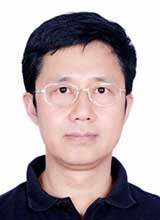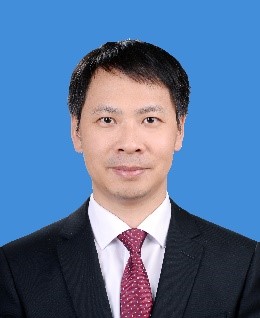大会报告
大会报告
Optical holography enabled by artificial intelligence
顾敏
上海理工大学
摘要:Holography offers an approach to reconstructing both the intensity and phase information of an object under investigation and has been implemented with X-ray, electron beams, neutron beams and photons. In the area of optical holography, this technology can be multiplexed in many physical domains and thus has been applied in three-dimensional holographic display, data storage, optical encryption, holographic interferometry, and microscopy. On the other hand, artificial intelligence based on ever-increasing computing power including neuromorphic computing has heralded a disruptive horizon in many ways of our life. I will show holography multiplexed in the optical orbital angular momentum domain and artificial-intelligence enabled holography as well as all-optical machine learning.
 个人简介:Professor Gu is Executive Chancellor of the University Council and Distinguished Professor of University of Shanghai for Science and Technology. He was Distinguished Professor and Associate Deputy Vice-Chancellor at RMIT University and a Laureate Fellow of the Australian Research Council. He is an author of four standard reference books and has over 500 publications in nano/biophotonics. He is an elected Fellow of the Australian Academy of Science and the Australian Academy of Technological Sciences and Engineering as well as Foreign Fellow of the Chinese Academy of Engineering. He is also an elected fellow of the AIP, the OSA, the SPIE, the InstP, and the IEEE. He was President of the International Society of Optics within Life Sciences, Vice President of the Board of the International Commission for Optics (ICO) (Chair of the ICO Prize Committee) and a Director of the Board of the Optical Society of America (Chair of the International Council). He was awarded the Einstein Professorship, the W. H. (Beattie) Steel Medal, the Ian Wark Medal, the Boas Medal and the Victoria Prize for Science and Innovation. Professor Gu is a winner of the 2019 Dennis Gabor Award of SPIE.
个人简介:Professor Gu is Executive Chancellor of the University Council and Distinguished Professor of University of Shanghai for Science and Technology. He was Distinguished Professor and Associate Deputy Vice-Chancellor at RMIT University and a Laureate Fellow of the Australian Research Council. He is an author of four standard reference books and has over 500 publications in nano/biophotonics. He is an elected Fellow of the Australian Academy of Science and the Australian Academy of Technological Sciences and Engineering as well as Foreign Fellow of the Chinese Academy of Engineering. He is also an elected fellow of the AIP, the OSA, the SPIE, the InstP, and the IEEE. He was President of the International Society of Optics within Life Sciences, Vice President of the Board of the International Commission for Optics (ICO) (Chair of the ICO Prize Committee) and a Director of the Board of the Optical Society of America (Chair of the International Council). He was awarded the Einstein Professorship, the W. H. (Beattie) Steel Medal, the Ian Wark Medal, the Boas Medal and the Victoria Prize for Science and Innovation. Professor Gu is a winner of the 2019 Dennis Gabor Award of SPIE.
信息超表面及其应用
崔铁军
东南大学
摘要:本报告将介绍信息超表面的最新研究进展,包括基于信息超表面的电磁信息理论、时空信息转换机制、时空数字编码超表面对波束和波谱的联合调控、拟量子信息超表面、光调控信息超表面等,着重介绍基于信息超表面的无源通信系统和智能与识别系统原型等。
 个人简介:崔铁军,中国科学院院士,东南大学首席教授,IEEE Fellow,长期从事电磁超材料和计算电磁学研究。1993年获西安电子科技大学博士学位,1995-2002年先后任职德国洪堡学者、美国UIUC博士后和研究科学家。2001年受聘东南大学长江学者特聘教授;2002年获得国家杰出青年科学基金。2014年创建信息超材料新方向。发表学术论文500余篇,被引用35000余次、H因子92(谷歌学术)。研究成果入选2010年中国科学十大进展、2016年中国光学重要成果;获2011年教育部自然科学一等奖、2014年国家自然科学二等奖、2016年军队科学技术进步一等奖、2018年国家自然科学二等奖。
个人简介:崔铁军,中国科学院院士,东南大学首席教授,IEEE Fellow,长期从事电磁超材料和计算电磁学研究。1993年获西安电子科技大学博士学位,1995-2002年先后任职德国洪堡学者、美国UIUC博士后和研究科学家。2001年受聘东南大学长江学者特聘教授;2002年获得国家杰出青年科学基金。2014年创建信息超材料新方向。发表学术论文500余篇,被引用35000余次、H因子92(谷歌学术)。研究成果入选2010年中国科学十大进展、2016年中国光学重要成果;获2011年教育部自然科学一等奖、2014年国家自然科学二等奖、2016年军队科学技术进步一等奖、2018年国家自然科学二等奖。
超高分辨率光矢量分析技术
潘时龙
南京航空航天大学
摘要:新一代光信息系统(光通信、光传感、光处理等)迫切要求光子器件能够对光信号进行多维度(幅度、相位、偏振等)和高精细操控,对这些光子器件的多维光谱响应进行精确测量已成为相关领域创新和取得突破的前提。一种实现高分辨率光矢量分析的有效途径是:采用微波光子技术将粗粒度的光域波长扫描转换成超高分辨率的微波频率扫描,辅以高精度电幅相检测,进而实现光器件多维光谱响应的超高分辨率测量。然而,该技术仍面临测量范围较窄、动态范围较小和测量误差较大等关键挑战。本报告将深入探讨这些挑战,并介绍相应的解决方法。此外,报告还将探讨该技术的应用和未来发展趋势。
 个人简介:潘时龙,教授,博士生导师,主要研究基于微波光子技术的新体制雷达、无线通信、测量系统和集成微波光子学等。主持国家自然科学基金重大科学仪器研制项目等国家级重点重大项目。成果获日内瓦国际发明展特别金奖、江苏省科学技术奖一等奖、中国光学工程学会创新科技奖一等奖、教育部自然科学奖二等奖等。入选美国光学学会会士(OSA Fellow)、国际光学学会会士(SPIE Fellow)和英国工程技术学会会士(IET Fellow),担任IEEE MTT-22副主席,IEEE MWP2021的大会共同主席和IEEE MWP2017的技术委员会共同主席等。曾获得IEEE MTT-S Outstanding Young Engineer,中国青年科技奖、IEEE Photonics Society Distinguished Lecturer、教育部霍英东青年教师奖等荣誉。
个人简介:潘时龙,教授,博士生导师,主要研究基于微波光子技术的新体制雷达、无线通信、测量系统和集成微波光子学等。主持国家自然科学基金重大科学仪器研制项目等国家级重点重大项目。成果获日内瓦国际发明展特别金奖、江苏省科学技术奖一等奖、中国光学工程学会创新科技奖一等奖、教育部自然科学奖二等奖等。入选美国光学学会会士(OSA Fellow)、国际光学学会会士(SPIE Fellow)和英国工程技术学会会士(IET Fellow),担任IEEE MTT-22副主席,IEEE MWP2021的大会共同主席和IEEE MWP2017的技术委员会共同主席等。曾获得IEEE MTT-S Outstanding Young Engineer,中国青年科技奖、IEEE Photonics Society Distinguished Lecturer、教育部霍英东青年教师奖等荣誉。
拓扑光子学
陆凌
中国科学院物理研究所
摘要:拓扑光子学是数学拓扑与光子学的首次相遇,发现了光子除频率,偏振之外的一个新的全局自由度,即光场在系统动量空间整体构型的离散化,这一拓扑自由度能用来保证光学体系的稳定性和独特性。我将以微波段的“单向波导”为例介绍领域的基本原理,其无条件的传输稳定性是前所未有的完美导光机制。我还将介绍光波段的狄拉克涡旋“拓扑光腔”,其最佳大面积单模性有望催生下一代半导体面发射激光器。
 个人简介:中国科学院物理研究所研究员,光物理重点实验室副主任、L01课题组组长。2003年于复旦大学获得物理学学士学位,2010年于美国南加州大学获得电子工程硕士和博士学位,论文课题是“光子晶体激光器”。在美国麻省理工学院物理系做博士后期间开始“拓扑光子学”的研究,分别在Nature Photonics和Reviews of Modern Physics上合作撰写了同名综述文章。获得亚太物理学会“杨振宁奖”(2016),国家基金委“杰出青年”项目资助(2020),和科睿唯安“高被引科学家”(2019、2020)。
个人简介:中国科学院物理研究所研究员,光物理重点实验室副主任、L01课题组组长。2003年于复旦大学获得物理学学士学位,2010年于美国南加州大学获得电子工程硕士和博士学位,论文课题是“光子晶体激光器”。在美国麻省理工学院物理系做博士后期间开始“拓扑光子学”的研究,分别在Nature Photonics和Reviews of Modern Physics上合作撰写了同名综述文章。获得亚太物理学会“杨振宁奖”(2016),国家基金委“杰出青年”项目资助(2020),和科睿唯安“高被引科学家”(2019、2020)。
